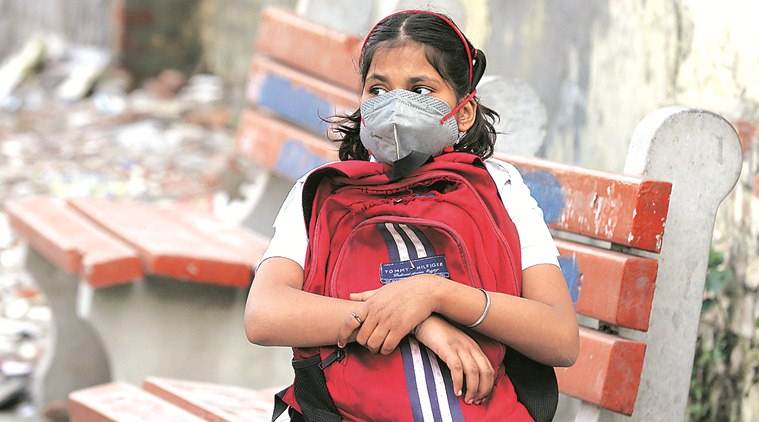 73 per cent of India’s 1.04 million schools are government run. About 54 per cent of India’s school going children attend such schools.
73 per cent of India’s 1.04 million schools are government run. About 54 per cent of India’s school going children attend such schools.
By Smriti Khemka and Anmol Rathore
In his popular lecture series, The School and Society, the American philosopher and education reformer John Dewey says, “the chief difference between savagery and civilisation is not in the naked nature which each faces, but social heredity and social medium”.
The significance of such an understanding cannot be emphasised enough at a time when the COVID-19 crisis has posed several challenges to the country’s educational system. Education is often seen as a means to minimise social and economic inequality. However, when social hierarchies and the medium of education itself play critical roles in access to education, it is unlikely to achieve its noble targets. COVID-19 has brought about disruptive changes in the way education is imparted in schools across the world — many countries have resorted to online and technological interventions. But in India, such interventions can result in the exclusion of the marginalised.
The Union Ministry of Human Resource Development, (MHRD) has promoted the use of various digital learning portals like DIKSHA and SWAYAM. The use of these resources depends on access to electricity, computers, electronic devices and internet connectivity. But the spread of digital infrastructure in India is uneven. According to the Key Indicators of Household Social Consumption of Education in India, 2017-18, National Sample Survey, a mere 14.9 per cent of rural, and 42 per cent of urban households have access to internet facilities.
Only 4.4 per cent of rural households and 23.4 per cent of urban households have access to computers. Moreover, a distinction has to made between access to the internet (in general) and internet access at home. For instance, 51 per cent of rural households in Kerala have access to the internet, but only 23 per cent have internet access at home. The percentages are much lower in Andhra Pradesh, Bihar and West Bengal. According to the Niti Aayog, there are over 55,000 villages in India with no mobile connectivity. Children in the poorer districts of the country tend to do badly in terms of learning outcomes. The new interventions will aggravate their problems.
According to the U-DISE report of 2016-2017, 73 per cent of India’s 1.04 million schools are government run. About 54 per cent of India’s school going children attend such schools. Unlike private schools, which are better equipped with e-learning solutions, the government and low-fee private schools are facing significant challenges. Moreover, most of the e-learning initiatives in the country focus on secondary, senior secondary and university education, creating an uncertain situation for elementary education. Digital infrastructure, even in the pre-COVID era, was at a nascent stage. The over-reliance on it in these testing times will create serious problems.
Now that the government has given the go-ahead to “un-lockdowns”, there is a need to include education in the list of essential services, not strictly in terms of re-opening educational institutions but coming up with appropriate no-tech and low-tech solutions. This will ensure that the spirit of the Right to Education Act, 2009 is alive — bringing education to children if children cannot come to the educational institutions themselves.
Taking advantage of the neighbourhood school clause (Section 6) of the Act and leveraging the well-connected post-office network, educational resources can be secured at the doorstep for every child irrespective of the place they live (rural or urban), COVID zones (containment or otherwise) or educational level (primary or secondary). On an average, one post office serves 21.56 sq km and a population of 7,753 people. They have been instrumental in ensuring the supply of medical and essential goods goods during the pandemic, especially in the containment zones. This country-wide network can play a game-changing role in ensuring that the supply chain of education resources remains intact. The government of Portugal is reportedly contemplating similar steps.
The teachers of the local neighbourhood government schools — on non-teaching COVID-related duties in Delhi, Rajasthan and Kerala — can be roped into the endeavour. They can be involved in creating or distributing printed material (created at the level of centre or states). These may be further broken down into simple lessons, preferably in local languages and dialects so that even first-generation learners can access them. The use of pictorial representation like flowcharts and concept maps should be encouraged.
The network of School Leaders can play a pivotal role in encouraging parents to be a part of School Management Committees (SMCs). They can be a grievance redressal source and act as a bridge between the home and the school. There should be a mechanism to send the worksheets/workbooks back to the teachers using the services of the postal network (in predominantly rural settings) or mobile phones (wherever applicable).
In addition to these no-tech interventions, use of low-tech solutions can help in mitigating the learning loss of students. Evidence suggests that the use of interactive radio instructions (IRI) leads to higher levels of student achievements, across age and social settings. Mobile monitoring and increasing teacher interaction, through simple interventions like phone-calls have produced positive outcomes in so far as student performance is concerned. Central and state governments can also provide subsidised TV sets, and internet connection for students who may need them.
Reopening of educational institutions is reportedly amongst the last of the un-lockdown measures. Meanwhile, policy makers must ensure that equity and inclusion remain central to their plans on education.
Khemka is co-founder of Delhi-based think tank Green Governance Initiative and a PhD candidate at Faculty of Education, University of Cambridge. Rathore is a Research Fellow at the National Institute of Public Finance and Policy (NIPFP), New Delhi. The writers thank Aparajita Sharma for her inputs. Views are personal